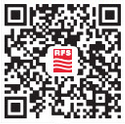Travel guide: managing connectivity over summer holidays
Although it is not a year-round phenomenon, it is crucial that operators account for increased demand at certain times of the year. Of course, not everywhere is impacted equally and so the key is balancing where will need additional capacity and how this can be delivered.
Travel
When we talk about catering for tourists, let’s start at the beginning – travel. Delivering connectivity across railways, metro sites and airports must be a priority to meet the expectations of the millions of passengers these venues serve each year. How to tackle this varies from area to area. Let’s look firstly at airports. Here is an area where RF planning is critical to ensure site wide coverage that can cope with demand even at peak times. Likewise, Metro sites also require careful planning, but also come with the additional challenge of delivering connectivity deep underground. When we combine that RF planning expertise with best in class radiating cable solutions, we at RFS have been able to work on deployments that serve a combined daily ridership of over 134 million.
Sightseeing cell-sites
It may be stating the obvious, but mobile sites covering tourist attractions need to be able to adjust to allow significantly increased coverage at peak times. For operators there are multiple elements that can be employed to address this, and cell site equipment needs to be capable of supporting advanced network features that allow capacity to be increased. Take for example, Self-Optimizing Networks (SON). They aim to use artificial intelligence to adjust the elevation tilt of the antenna patterns as needed to better align with changing user densities. Having equipment that can support this gives operators a vital tool in their arsenal as they look to increase capacity at specific sites over the peak summer tourist season.
Maintaining the view
Although some tourist attractions can be covered by existing cell site equipment, others pose more of a challenge, particularly when we move indoors. They need to maintain the connectivity visitors expect, without having a visual impact. A great practical example of delivering a solution for this type of problem is at Louvre Abu Dhabi. This is the only museum in the world with a floating dome roof and needed a solution to provide high-capacity coverage, without impacting the effect of its “rays of light” ceiling. RFS worked on this project, delivering a specialized MIMO solution and using innovative installation techniques for cable splitters, couplers and antennas to deliver exactly what was needed to by both the museum and its visitors.
Gold star coverage in stadiums
Summer equals sports season. This year alone stadiums across the world will be packed with visitors for the Women’s Football Euros, the Commonwealth games and, later in the year, the World Cup. Being able to watch some of the biggest spectacles in sports is now only part of the experience. Consumers also want to be able to use mobile data to share those moments with friends and family at home. This means high-capacity coverage in stadiums is critical. Ensuring the right in-building solutions to serve tens of thousands of supporters at one time is a crucial part of being able to deliver the experience visitors are expecting.
Conclusion
It may be quiet season for many, but for operators, keeping customers connected throughout travel season has the potential to cause significant headaches. However, by laying the groundwork early with solutions that are capable of adapting to meet demand, service providers can take off a certain amount of pressure and also be in a position to enjoy the summer months, or at least try to.

.jpg)
